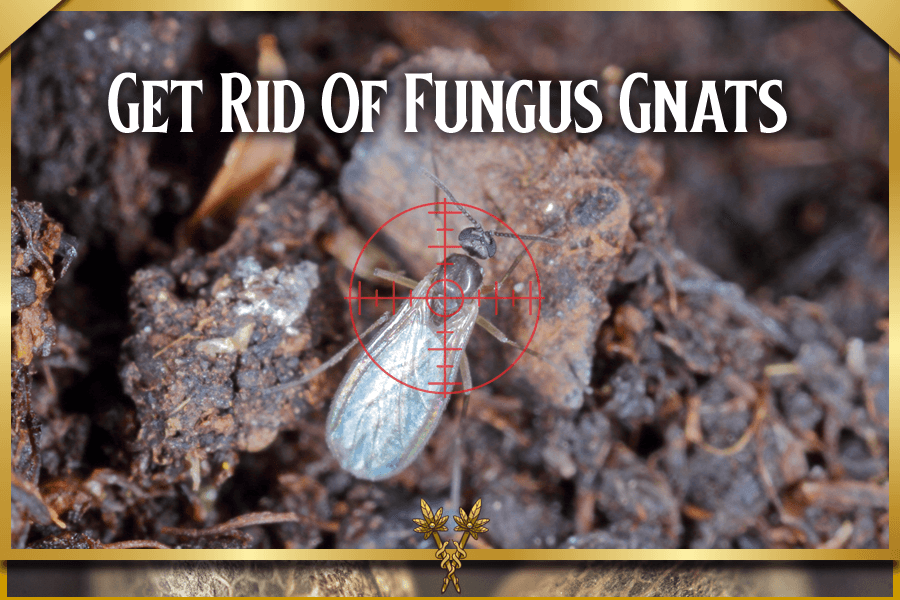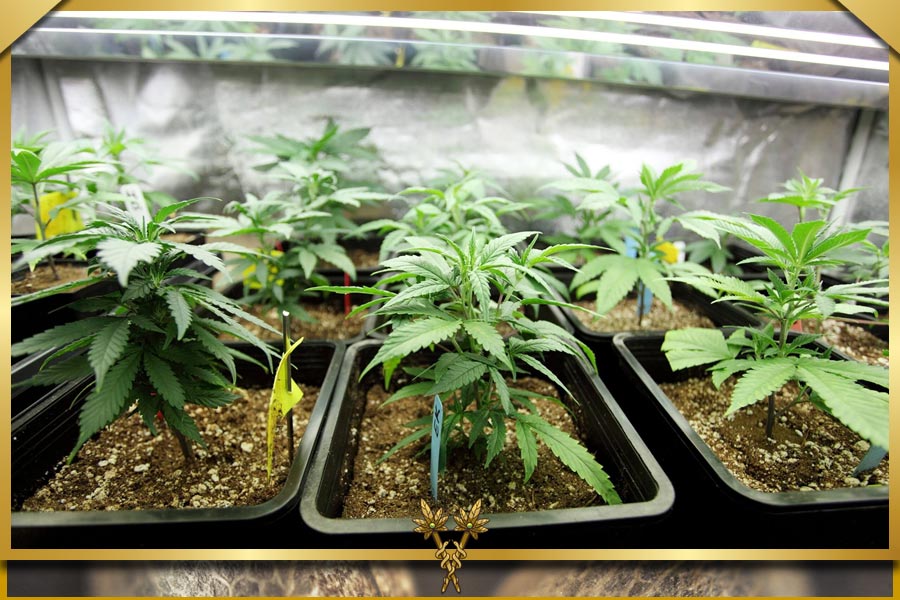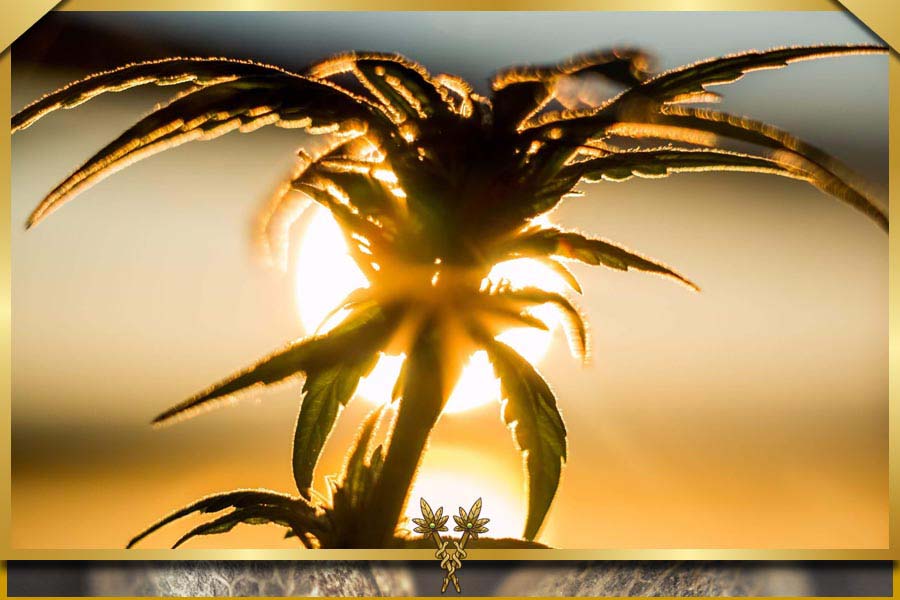A Cannabis Feeding Schedule is Beneficial because cannabis plants require the proper amounts of light, carbon dioxide, and water to thrive. Following their growth stage, they also require the ideal cannabis feeding schedule and the correct nutrient combination.
The plants would require more nutrition as they grew bigger. You will need to alter the nutrient mix once they start flowering.
Additionally, it would be best if you regularly altered the nutrients fed to them throughout their life cycle.
This article “Is a Cannabis Feeding Schedule is Beneficial” will teach you how to do that by using a unique feeding schedule for marijuana cultivation.
Selecting a cannabis growing medium
You can use soil or organic materials. You can also grow hydroponically or without soil by using materials such as rock wool or pea gravel.
If you decide to choose soil, you must select nutrient-rich soil.
There are numerous options. You must choose your nutrients after selecting your soil. Do your research, and whichever option you choose, stick to the manufacturer’s recommended cannabis feeding schedule.
Cannabis Feeding Benefits in Soil?
There is undoubtedly a multitude of benefits to growing marijuana in soil. Cannabis always has and always will grow in soil in the wild.
Soil is easier to use and more straightforward than its natural environment.
You will probably need to start by purchasing from a garden supply store indoors, and then you can add nutrients as your plants develop. Composting your soil is an additional choice.
Incidentally, composting is a great way to track and ensure you have the proper nutrient and pH levels for your plants.
After you’ve finished the initial setup, maintaining your cannabis plants is pretty straightforward. Ensure you’re watering them, giving them nutrients, and controlling the pH.
However, replacing damaged containers will likely outweigh any additional costs.
Bugs and pests can also live in the soil. To prevent disappointments in the future, you must be more vigilant in spotting issues early.
Before growing the following crop of plants, you might need to replace the soil.
Despite some potential issues, you cannot go wrong with soil mediums, mainly if you stick to a good cannabis feeding schedule.
It continues to be the most organic substrate, allowing your plants to flourish and develop to their full potential.
How to Begin The “Is a Cannabis Feeding Schedule Beneficial” Guide
It would help if you had soil and containers for setup. Any top-notch organic soil blend will do.
Poor drainage, which suffocates the roots and prevents their ability to absorb oxygen, is one potential issue if it seems too dense or heavy. Vermiculite and 30% perlite are added to improve aeration and loosen the material.
Some farmers use organic “super soil,” a composted soil that provides plants with everything they require at the right time without additional nutrients or pH control.
It has the benefit of producing buds with a better aroma and flavour profile.
Avoid any commercial soil mixtures with “extended-release” nutrients.
These soil types continuously release nitrogen for up to six months, which is not required when the plants are in their flowering or budding stages. In actuality, an excess can lower overall yields.
In terms of growing containers, there are many options. Terra-cotta and plastic pots are widely used, despite the increasing popularity of fabric pots (also known as smart pots) and air pots.
Soil mixed with perlite performs better in conventional gardening pots. On the other hand, air-pots and smart pots offer additional aeration without perlite.
How to Use a Cannabis Feeding Schedule Charts
Manufacturers of fertiliser offer recommended Cannabis Feeding Schedule charts.
The growth stage details the nutrients and mixture, how much to use, and what pH level to maintain.
Although they are an excellent place to start, you should expect to make adjustments based on the marijuana strain’s requirements and the growing environment.
If you want to modify a marijuana feed chart successfully, keep a thorough daily journal. Make a note of the following:
- When did you last feed your plants?
- What nutrient mix did you use?
- What was your dilution ratio?
On your cannabis plants, keep an eye out for any signs of yellowing or curling leaves. You can then adjust the nutrient combination or your cannabis feeding schedule.
The vegetative and flowering stages of the cannabis plant require different amounts of water and nutrients. It would be best if you made weekly adjustments as they grow large in mass, even within a single growth stage.
Determine the Appropriate Nutrient Amount
Adding minerals and micronutrients to the soil makes it possible to achieve rapid growth and high yields. Success, though, depends on how much you add.
A lack of nutrients will result in stunted growth and poor flowering. However, too much (nutrient burn or toxicity) will also cause related issues.
Nitrogen is essential for marijuana plants, especially during the vegetative phase. They also simultaneously need phosphorus, potassium, calcium, magnesium, and sulphur.
Additionally, it would help if you supplied micronutrients, which are minerals like zinc, iron, manganese, molybdenum, chlorine, cobalt, and others that are used in smaller amounts.
You must measure the TDS or EC to determine the precise amount of nutrients in your watering solution.
What is TDS?
Total Dissolved Solids, or TDS, are measured in parts per million (ppm). It counts all the minerals that have dissolved in the water. It won’t, however, reveal what kinds of minerals are present.
Usually, calcium, magnesium, and chlorine are present in tap water. TDS should be less than 100 ppm in domestic water supplies, but in some places, it may reach 400 ppm.
Of course, the TDS rises when micronutrients and fertiliser are added. To prevent inaccurate readings, many growers use distilled water with no particles.
You can quickly determine the potency or concentration of your nutrient solution using TDS. It informs you of the number of nutrients you are feeding the plants and whether or not they are sufficient.
What is EC?
Electrical conductivity, or EC, is the milli- or microSiemens-measured ability of dissolved solids to conduct electricity.
Salt (sodium chloride) and water combine to form charged particles known as ions. The non-metal chlorine produces negative ions, whereas the metal sodium creates positive ions.
Together, they allow electrical currents in the water to flow.
Since all microscopic solids are eliminated during the distillation process, distilled water has no EC. However, even a tiny amount of mineral addition can significantly alter the EC.
Salts found in fertiliser mixtures, such as nitrates and phosphates, will impact the EC of the nutrient solution. Therefore, a higher EC indicates that there are more nutrients present.
How Can the TDS/EC Be Regulated?
Calculating the TDS and EC for a cannabis feeding schedule is typically the most challenging step.
Managing the nutrient concentration is easy once you have a measurement from your handheld metre. Add more water if the TDS/EC is too high.
Alternatively, if too low, add more nutrient mix. Use commercially available nutrient mixes lightly due to the high concentration.
Use a handheld metre to measure TDS or EC to ensure that the nutrients are properly concentrated. Nutrient burn can occur at too high a level, whereas nutrient deficiency can occur at too low a level.
Both conditions have the unfavourable consequences of slow growth and low yield.
Learn how to properly water your plants so they can absorb the nutrients you are feeding them.
We hope you’ve received some benefits from reading “Is a Cannabis Feeding Schedule Beneficial”


